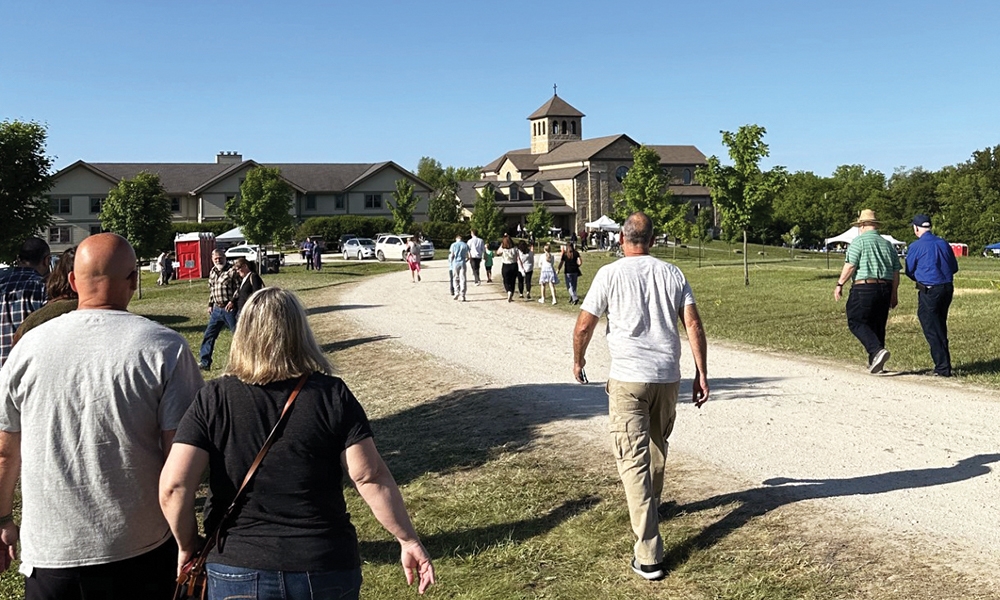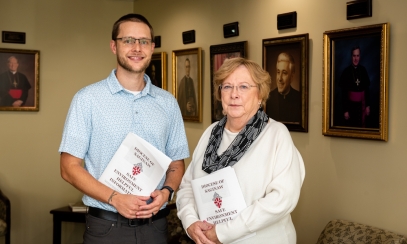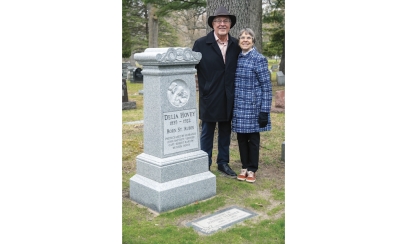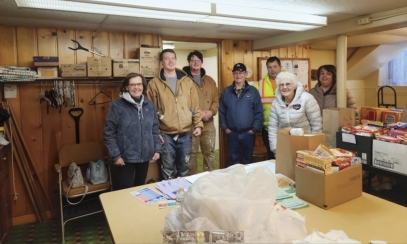
'A visible sign of God’s invisible reality'
Editor’s note: In May, the Benedictines of Mary, Queen of the Apostles, in Gower, Missouri, exhumed the body of their foundress, Sister Wilhelmina Lancaster, with the expectation of reinterment of her mortal remains following the addition of a St. Joseph Shrine at the Abbey of Our Lady of Ephesus. While the sisters expected bones, they discovered that Sister Wilhelmina’s remains were intact and her religious habit was well-preserved.
This discovery led to widespread interest in Sister Wilhelmina, and many faithful Catholics were moved to travel to the sisters’ abbey and pay their respects. Spencer Skorupski of Bay City was one of thousands who did so.
Editor’s note: In May, the Benedictines of Mary, Queen of the Apostles, in Gower, Missouri, exhumed the body of their foundress, Sister Wilhelmina Lancaster, with the expectation of reinterment of her mortal remains following the addition of a St. Joseph Shrine at the Abbey of Our Lady of Ephesus. While the sisters expected bones, they discovered that Sister Wilhelmina’s remains were intact and her religious habit was well-preserved.
This discovery led to widespread interest in Sister Wilhelmina, and many faithful Catholics were moved to travel to the sisters’ abbey and pay their respects. Spencer Skorupski of Bay City was one of thousands who did so.
Spencer is a parishioner at St. Jude Thaddeus Parish in Essexville and the owner and operator of Skorupski Funeral Homes in Bay and Saginaw Counties, and brings with him the unique perspective as both a Catholic and a funeral director.
While I have many loves in life, my Catholic faith happens to be at the top of the list. My father was a cradle Catholic, having been raised on Detroit’s east side and growing up at St. Raymond Church, my father was a cradle Catholic. A now-retired union millwright, he took an assignment in the 1970s at the Karn Weadock power plant in Bay City, right where the Saginaw River meets the bay. That view must have made him fall in love with the Great Lakes Bay Region, as he decided to plant roots in the area. My family has been here ever since.
Having been deeply moved after attending my grandfather’s funeral, I knew by the age of 12 my vocation in life was to become a funeral director. Though the catechism teachers and Father Bill Rutkowski at St. Stanislaus Kostka in Bay City (now a part of Our Lady of Czestochowa Parish) encouraged a priestly vocation, I discerned a different path. At the time of my licensure, I was the youngest funeral director in Michigan.
I’ve always found a great amount of solace during times of Eucharistic Adoration. In the fall of 2012, after graduating from college and accepting my first job in Indiana, I happened to be praying in front of the Blessed Sacrament at my parish at the time, St. Joseph in Terre Haute. When God tells you what to do, you just listen and follow his plan. That plan was for me to take a leap of faith to leave my comfortable job and open my own funeral business in my hometown.
On an unusually quiet Saturday toward the end of May, I noticed many Catholic pages on social media were quite active with articles on Sister Wilhelmina in Missouri. Prior to then, I had no idea who Sister Wilhelmina was. After doing some research, I learned she also had a deep love for the Eucharist.
Sister Wilhelmina was exhumed from her simple grave on the grounds of the motherhouse almost four years to the day of her death. Since she lived in a cloistered religious community, she would have been exempt from many of the final disposition laws we know here in Michigan. Sister was buried quickly after her death, with no embalming, in a simple wooden coffin, and with no vault. For a person buried in these conditions, nature would have begun to take its course within the matter of hours to days; however, Sister Wilhelmina somehow was still excellently preserved.
Many faithful Catholics began to flock to the small town of Gower, Missouri, to see for themselves at the Abbey of Our Lady of Ephesus, where the Benedictines of Mary, Queen of Apostles, live, work and pray. Having a free Saturday and needing to visit a fellow funeral director in the area, along with being deeply moved by Sister Wilhelmina’s story, I decided to take the trip for myself.
Upon entering the abbey grounds, there was a certain indescribable peace; one of knowing you were certainly amongst holiness. The nuns of the order were so friendly and some of the most joyous women I’ve ever met. I arrived pretty early in the morning; however, there was still a 45-minute wait to pay my respects to Sister Wilhelmina. By the time I left, the wait was well in excess of three hours and counting. Sister’s remains were in a remarkably well-preserved state, despite no embalming.
Paying my respects to Sister Wilhelmina was very similar to visiting a grave of a loved one or approaching the casket at a visitation. Myself and many other pilgrims kneeled and prayed for her intercession, and also thanked God for showing us a visible sign of his invisible reality.
Many who made the journey to see sister certainly felt this was a visible sign of God’s presence in our hectic and busy lives. I’m certain this was a once-in-a-lifetime experience for all the faithful Catholics who made the journey to Gower. It certainly had a lasting impact on me. While I was there and before, I learned quite a bit about Sister Wilhelmina and how she truly lived out her vocation. This was a very Christ-like woman. Being in her presence brought to the forefront of my mind: How can I be more Christ-like, and how can I live my vocation out to the fullest in care of the dead and service to the living?
To learn more about Sister Wilhelmina, visit www.benedictinesofmary.org/srwilhelmina



